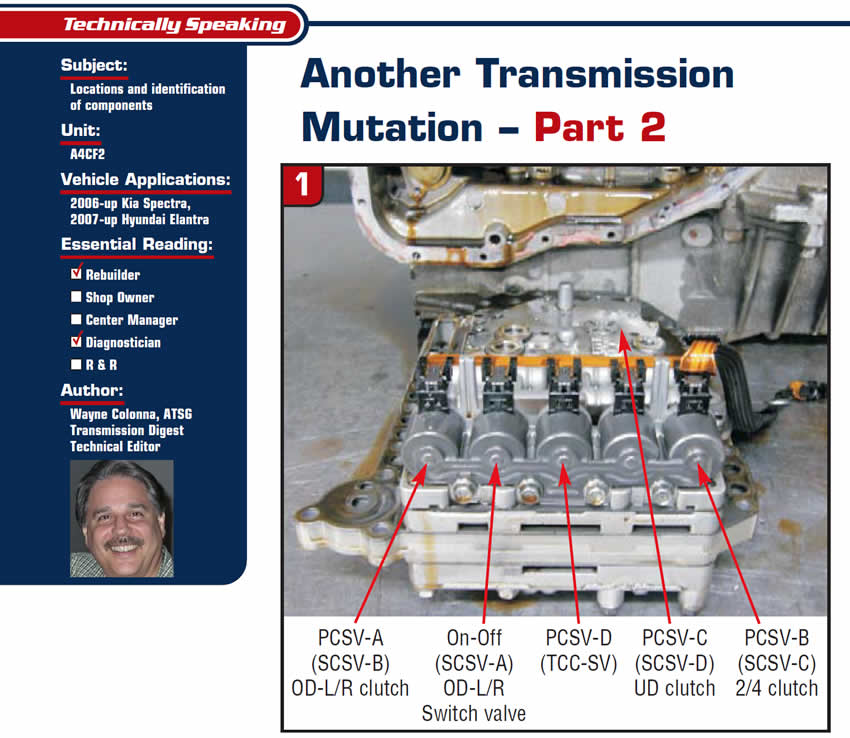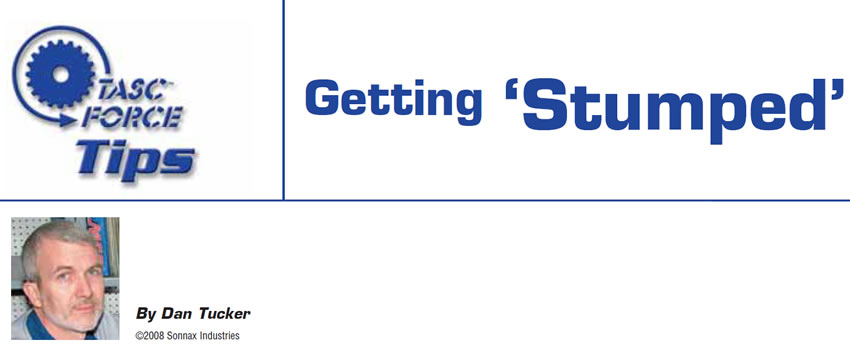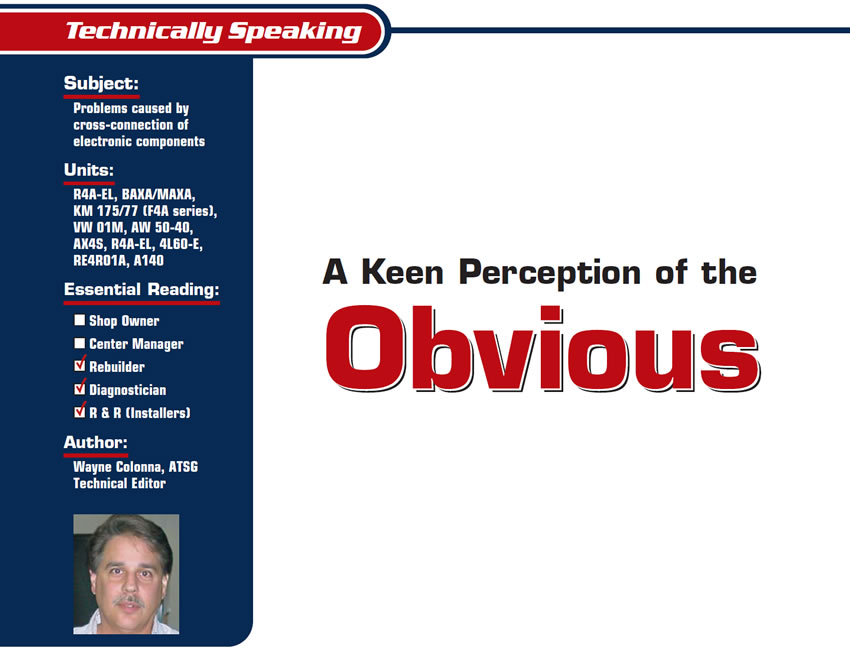Another Transmission Mutation – Part 2
I’m working on a 1997 Chevy truck that has an “intermittent transmission,” as the owner puts it. He goes on to explain, “It works fine most of the time but when it gets into its spell of acting up, it seems like all I get is one or two gears of bad gas mileage and no power.”

Getting ‘Stumped’
About 30 minutes later I got a call from the wrecker driver and he asked to talk to me. “This is scary; now what went wrong?” I was thinking. The wrecker driver told me he was “stumped.” He explained to me that the vehicle was in a position where he couldn’t get it loaded. Then he explained that the truck wouldn’t roll, as it was hung up – you got it, on a STUMP (see figures 1 and 2)!

Déjà Vu All Over Again
When GM introduced the stamped-steel drum for the THM 200 transmission, it presented technicians with some new challenges. The 200 direct drums would crack where the inner liner (where the piston lives) was joined to the outer shell. The weld that holds the two members of the drum together is subject to pivotal flexing each time the clutch is applied. Over time, this flexing action will cause a crack at the weld.

4L60-E Flares on 2-3 Shift (Now What?)
In past TASC Force™ Tech Tips, I have stressed the benefits of testing electrical circuits by measuring current draw. I have also commented that finding new information adds pieces to the puzzle and helps to bring the whole technical picture into better view. This month’s topic is an example of using current-draw testing to uncover an additional cause for 2-3 shift flare on 4L60-E transmissions.

New Does Not Mean Good
As if the transmission industry weren’t difficult already, technicians also have to contend with new or remanufactured products that malfunction right out of the box.

Fluid Change Can Cost Big Change ($)
Some of us may remember how in the days of old a C-6 transmission would leave a beautiful filter footprint in the bottom pan. This resulted from the filter opening being too close to the pan. When the pump started sucking, it would pull the pan right up to the filter, and as it vibrated away the filter etched itself into the pan. Of course, that starved the pump and caused premature failure of the transmission.

A Keen Perception of the Obvious
A no-move 1992 Mazda MPV van was towed into a shop, where it was determined that the planets inside the R4A-EL transmission were toasted. One look at the vehicle and you can see why (see Figure 1). This van recently had been involved in a front-end collision that collapsed the oil-cooler line, causing a lack of cooler flow, and there ya go – wasted planets.

P1870 Revisited
Just when you thought you had all the P1870 torque-converter-clutch slip codes under your belt, another vehicle comes along – and here we go again!

AFL and AFL
AFL stands for actuator feed limit and another fourth lost.
Perhaps you’ve already chased this on a 4L80-E or in a somewhat similar fashion on a 4L60-E. Here’s how badly it can go. You take in your buddy’s 4L80-E with converter codes and failsafe operation beginning to appear at normal mileage. Make it worse: It’s a good buddy, so you give him a break on the price. You scan the unit, drive it, do a careful rebuild, check TCC-related areas, put in a good converter, fill it with your preferred red fluid and reset the computer.

No Lockup for No Reason?
Here’s a real-life example of a problem that came into our shop. A 1998 Chevrolet pickup with a 4L60-E was brought in with complaints of no reverse, no 2nd and no 4th gear. We figured this was a routine job. In fact, it’s usually a “gravy” job. We started the job by scanning for codes and found P1870 and P0300.

Close Counts Only in Horseshoes and Hand Grenades
Watch out when swapping stator shafts from one pump cover to another on 700-R4/4L60-E transmissions. We have all been there before. You have a unit with a good pump cover and a damaged stator shaft, and in your pile of parts there is a good stator shaft in a damaged pump cover. All you need to do is press the good stator shaft into the good pump cover and you will have what you need to get this car down the road today. Sounds simple, but how often are things that simple in this business?

